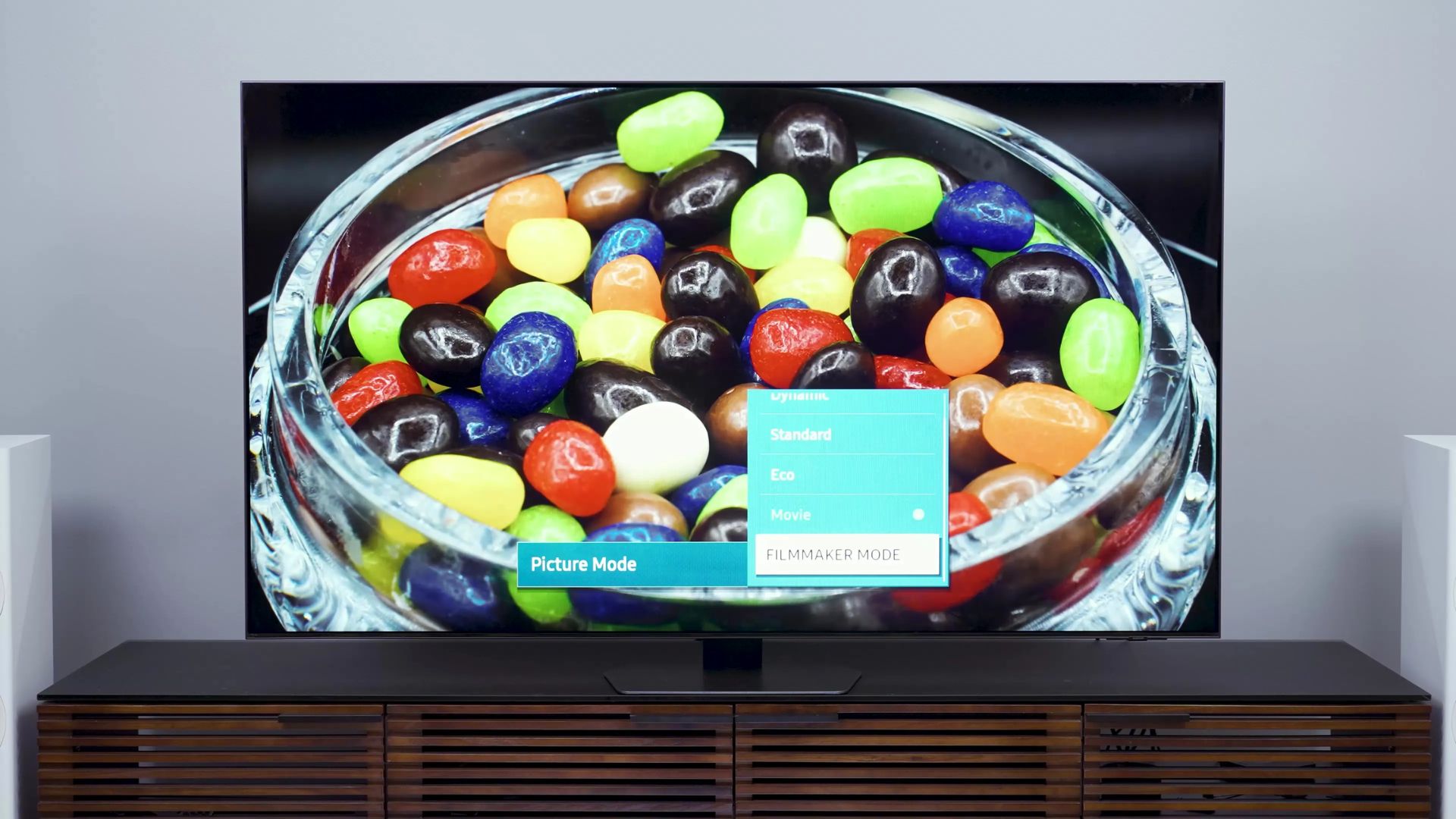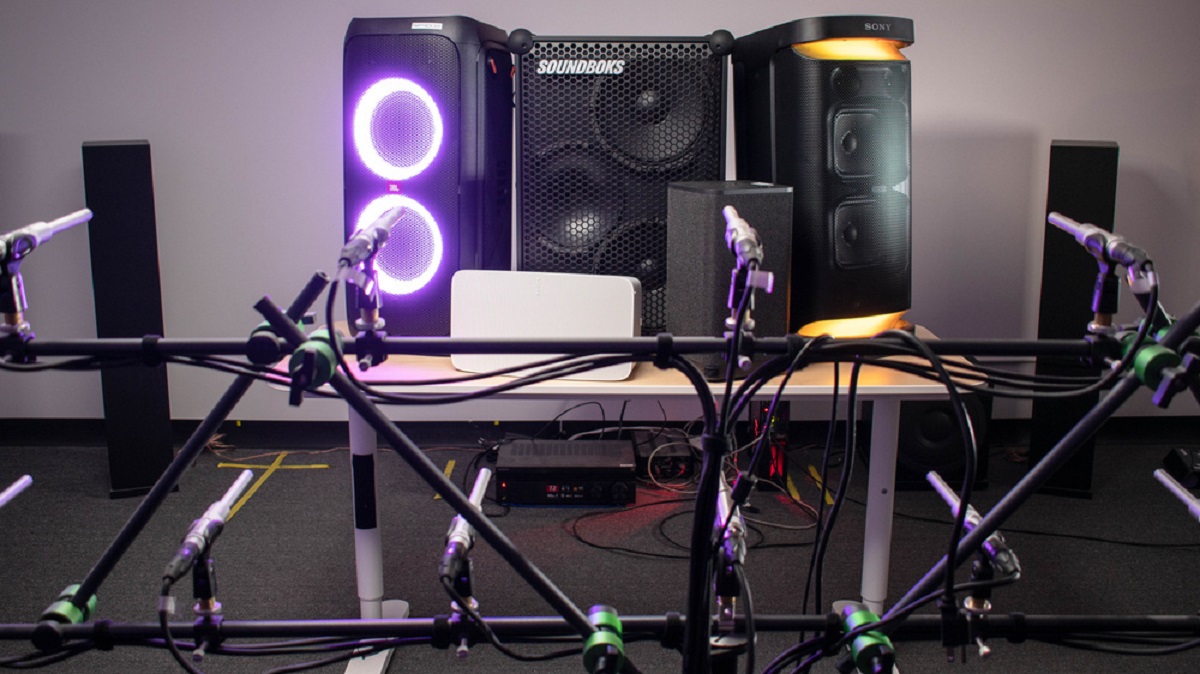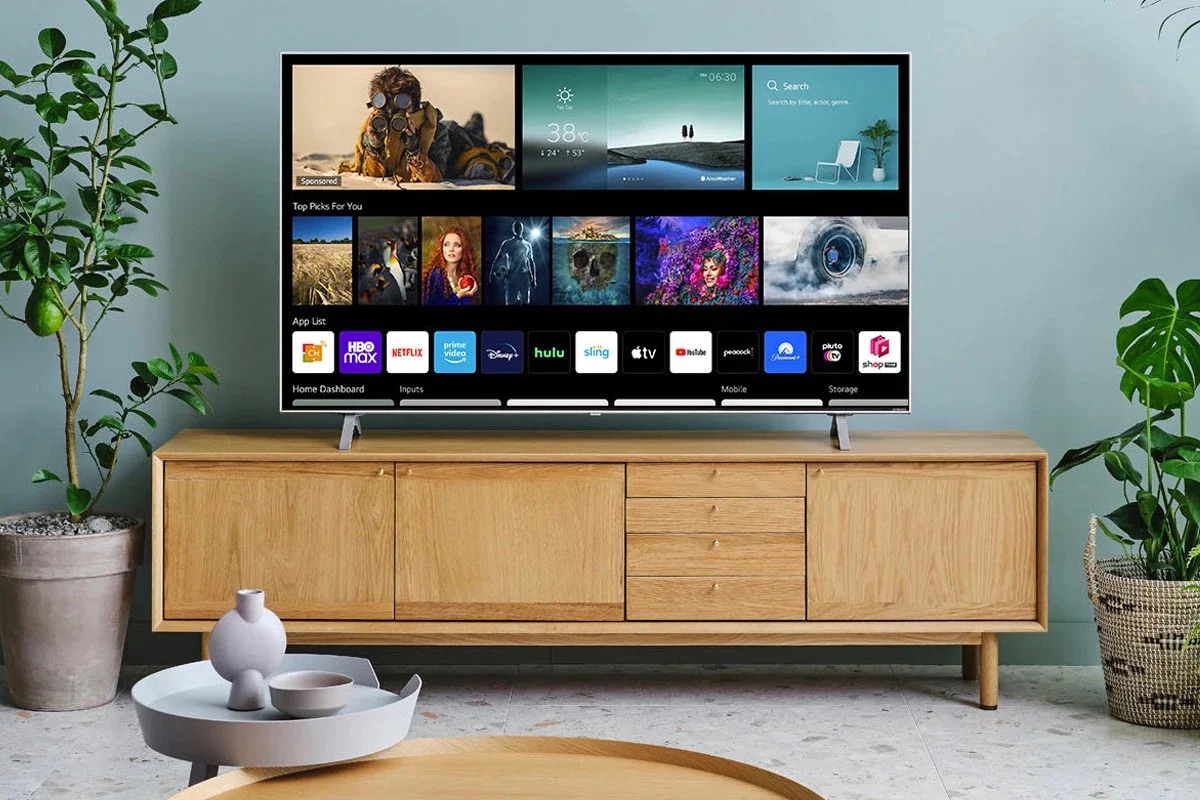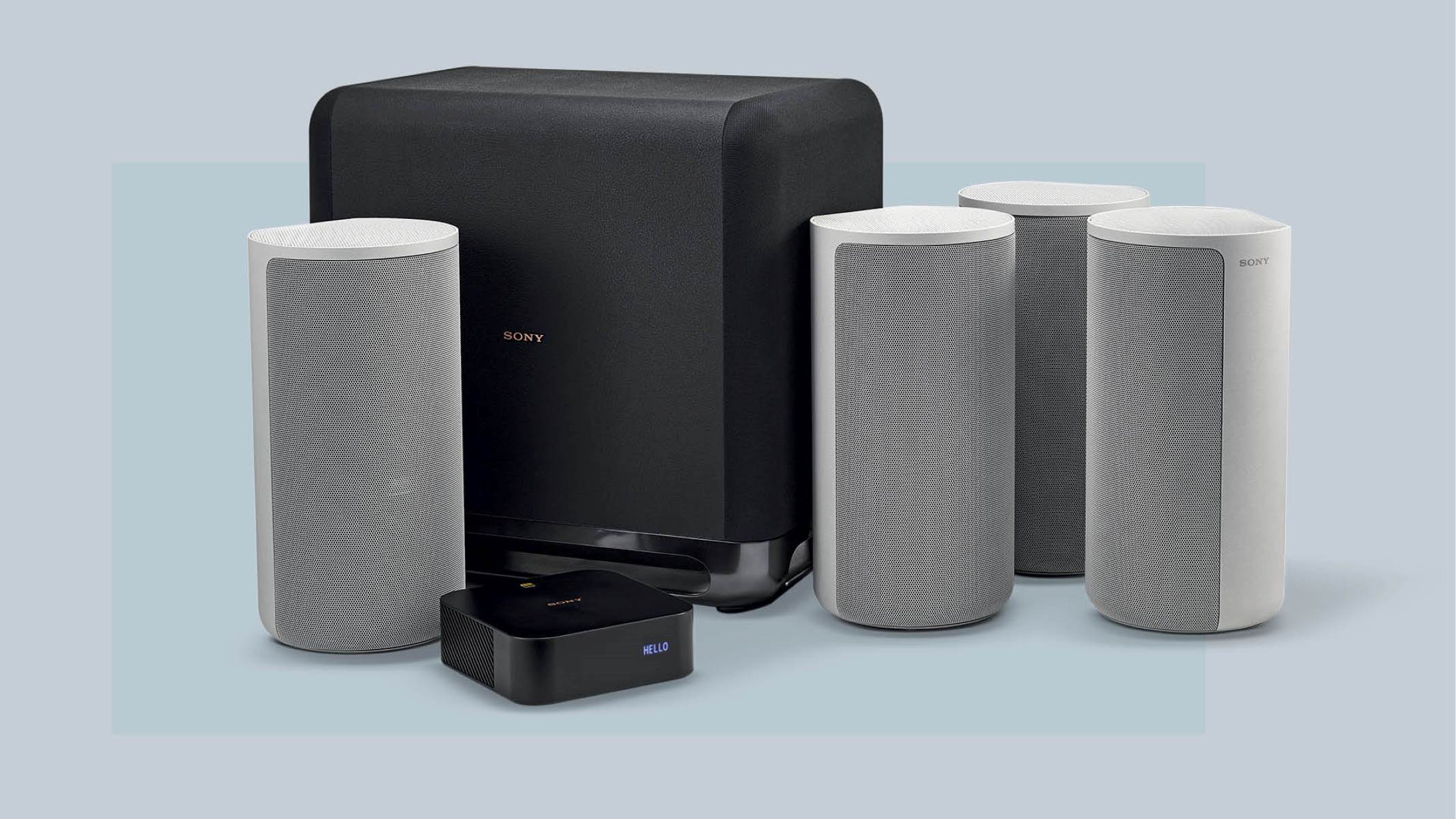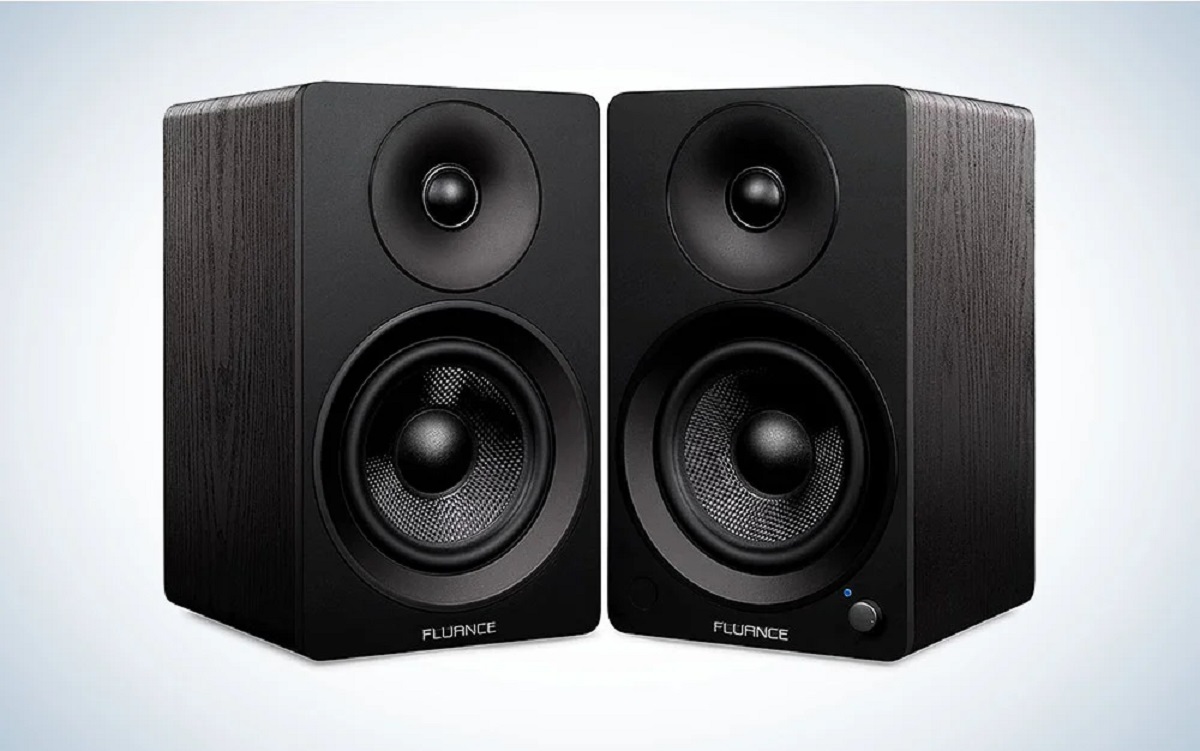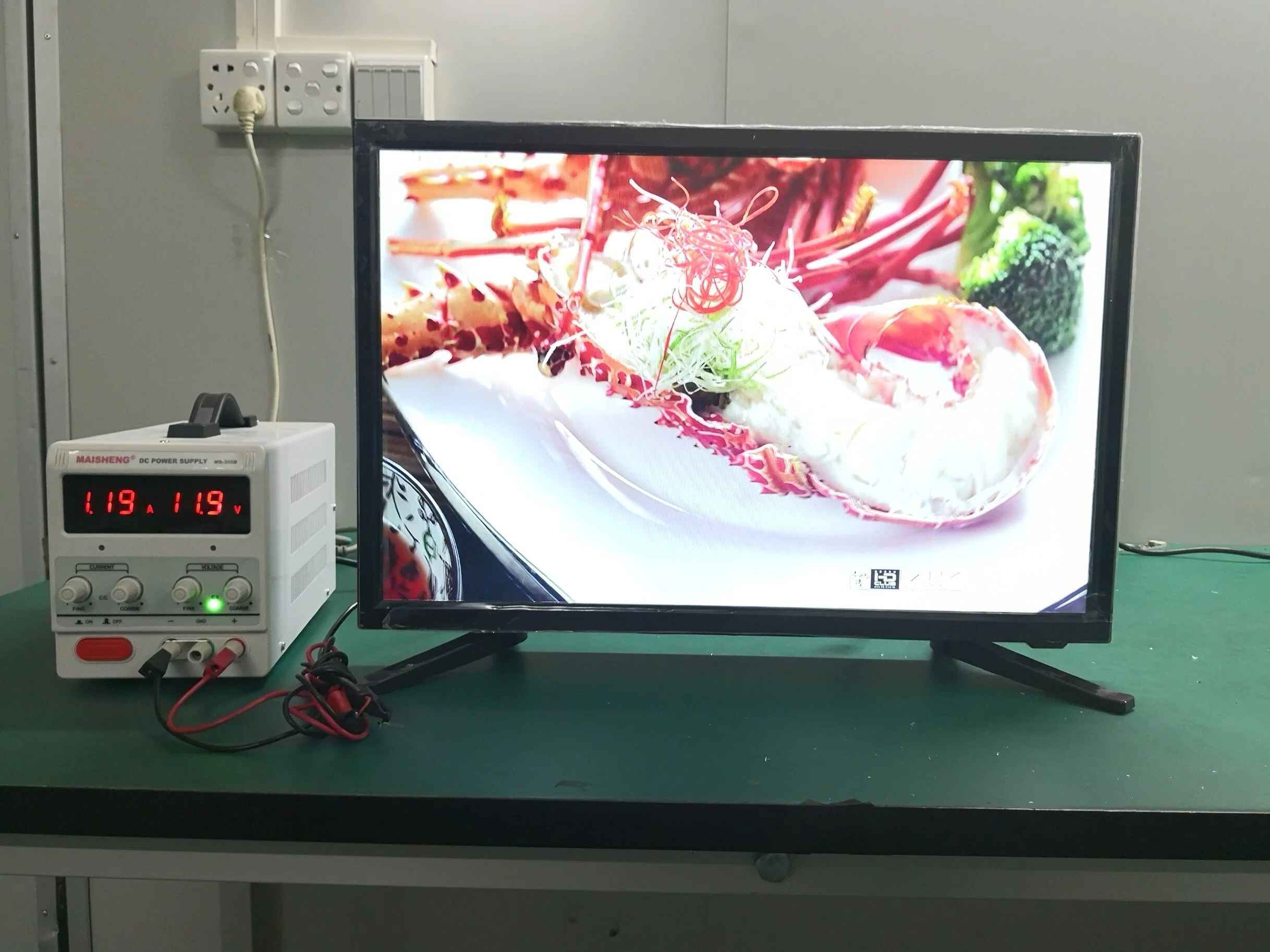Introduction
Welcome to our guide on LED TVs and their power consumption. With the rise in popularity of LED TVs, it’s important to understand how much energy these devices consume and how to minimize their impact on your electricity bill. In this article, we will delve into the world of LED TVs, exploring their power consumption, factors affecting it, and practical tips for reducing energy usage.
LED, which stands for light-emitting diode, is a type of technology used in modern televisions. LED TVs offer many advantages over traditional LCD TVs, including better picture quality, improved energy efficiency, and slim design.
LED TVs use an array of tiny LEDs as the backlight source. These LEDs produce light of different colors, which are combined to create the vivid images you see on the screen. The backlighting is the main contributor to the power consumption of LED TVs.
Understanding how LED TVs work and how much power they consume is crucial for both environmentally conscious consumers and those looking to reduce their electricity costs. By being aware of the factors that affect power consumption and implementing energy-saving practices, you can make a difference both for your wallet and the environment.
In this guide, we will explore the power consumption of LED TVs, the factors that influence it, the average wattage of these televisions, and how to choose energy-efficient models. We will also provide practical tips to help you lower the power usage of your LED TV without compromising your viewing experience.
So, let’s dive into the world of LED TVs and discover how you can become a more informed and energy-conscious consumer.
What is a LED TV?
A LED TV, or light-emitting diode television, is a type of flat-panel television that uses LED backlighting to display images. Unlike traditional LCD TVs, which use fluorescent tubes for backlighting, LED TVs utilize an array of light-emitting diodes (LEDs) to produce vibrant and energy-efficient visuals.
The concept of LED technology dates back to the 1960s, but it was not until recent years that LED TVs became the standard in the market. The advancements in LED technology have revolutionized the television industry by offering superior image quality and reduced power consumption.
LED TVs come in various sizes, ranging from small screens for personal use to large screens suitable for home theaters. They offer exceptional color accuracy, high contrast ratios, and sharp picture quality, making for an immersive viewing experience.
One of the key advantages of LED TVs is their slim profile. Compared to older television models, LED TVs are incredibly thin and lightweight. This sleek design allows for easy wall mounting and adds a modern touch to any living space.
In addition to their impressive visual capabilities, LED TVs are also more energy-efficient than their LCD counterparts. The use of LED backlighting results in significant energy savings, as LEDs consume less power and can be dimmed or turned off when displaying dark scenes, resulting in deeper blacks and further reducing energy usage.
LED TVs are available in two main types: edge-lit and full-array. Edge-lit LED TVs have the LEDs positioned along the edges of the screen, allowing for a slim design. Full-array LED TVs feature LEDs distributed behind the entire screen, offering better control over local dimming and backlight uniformity.
With their superior image quality, sleek design, and energy efficiency, LED TVs have become the go-to choice for consumers looking for an enhanced viewing experience while minimizing their environmental footprint. The next section will delve into the inner workings of LED TVs and explain how they produce the stunning visuals we enjoy.
How does a LED TV work?
Understanding how a LED TV works requires a closer look at its key components and processes. At the heart of a LED TV is the liquid crystal display (LCD) panel, which is responsible for creating the images we see on the screen.
The LCD panel in a LED TV consists of millions of tiny pixels that can be individually controlled to produce different colors. Each pixel contains liquid crystals that can block or allow light to pass through based on the electrical signals they receive.
Now, let’s see how an LED TV creates images:
- Backlighting: The first step is the backlighting. In a LED TV, an array of light-emitting diodes (LEDs) is positioned behind the LCD panel. The LEDs act as the source of light and provide illumination for the pixels in the display.
- Color filtering: The white light emitted by the LEDs passes through color filters that are positioned in front of the LCD panel. These filters create the three primary colors – red, green, and blue – by selectively allowing certain wavelengths of light to pass through.
- Polarizers and liquid crystals: After passing through the color filters, the light encounters a layer known as a polarizer. The polarizer ensures that the light waves are oriented in a specific direction. Next, the light enters the liquid crystal layer, where electrical currents control the orientation of the liquid crystals for each pixel.
- Pixel control: Every pixel has three sub-pixels, one for each primary color. By varying the electric field applied to the liquid crystals, the intensity of each sub-pixel can be adjusted. This control enables the LCD panel to create a wide range of colors and shades.
- Image formation: Finally, with the proper arrangement of liquid crystals and pixel control, the LCD panel creates the desired image by selectively blocking or allowing light to pass through certain pixels. This process happens rapidly, allowing for smooth motion and seamless visuals.
It’s important to note that LED TVs can employ different techniques to control the backlighting. Some LED TVs use edge-lit technology, where the LEDs are placed along the edges of the display and the light is distributed across the screen. Others use full-array or direct-lit technology, where the LEDs are situated behind the entire screen and can be dimmed or turned off in specific areas for better contrast and deeper blacks.
By combining precise control of liquid crystals and advanced backlighting techniques, LED TVs can deliver stunning visuals with vibrant colors, sharp details, and high contrast ratios. Now that we understand how LED TVs work, let’s delve into the topic of power consumption and explore how much energy these televisions typically consume.
Power consumption of LED TVs
LED TVs are known for their energy-efficient operation compared to older television technologies. The power consumption of LED TVs can vary depending on various factors, including the screen size, brightness settings, content being displayed, and specific features of the TV model.
The main contributor to the power consumption of LED TVs is the backlighting system. Backlighting uses the LEDs to provide illumination for the pixels on the display. The brightness level of the backlight directly affects the power consumption of the television. Higher brightness settings typically result in more energy being consumed.
LED TVs are designed to be energy-efficient by employing advanced technologies such as local dimming or dynamic backlighting. These technologies allow the TV to dim or turn off specific portions of the backlight, resulting in deeper blacks and improved contrast. This not only enhances the viewing experience but can also reduce power consumption by optimizing the amount of light used.
The size of the LED TV also plays a crucial role in its power consumption. Generally, larger TVs tend to consume more power due to their larger screen area and more LED lights required for backlighting. Therefore, it’s essential to consider the screen size when evaluating the energy efficiency of a LED TV.
In terms of power consumption, LED TVs are more efficient than LCD TVs that use fluorescent lighting. LED TVs can consume significantly less energy, especially when displaying dark scenes or using dimming features. Additionally, LED TVs have a quick start-up time and do not require a significant amount of power during the boot-up process.
Manufacturers often provide the power consumption specifications of their LED TV models. This information can be found either in the TV’s user manual or on the manufacturer’s website. It is recommended to compare the power consumption of different models before making a purchase decision, particularly if energy efficiency is a priority for you.
It’s worth noting that power consumption is measured in watts (W) and is typically provided for both active mode (when the TV is turned on) and standby mode (when the TV is in standby or sleep mode). The standby power consumption is usually lower, but it can still contribute to your overall electricity usage if the TV is left in standby mode for extended periods.
As a consumer, it is important to be aware of the power consumption of your LED TV and take steps to minimize energy usage without sacrificing the viewing experience. In the next section, we will explore the various factors that can affect the power consumption of LED TVs, allowing you to make informed decisions to optimize energy efficiency.
Factors affecting the power consumption of LED TVs
The power consumption of LED TVs can be influenced by several factors. Understanding these factors can help you make informed decisions to optimize energy efficiency and reduce your electricity consumption. Here are the key factors to consider:
- Brightness settings: The brightness level of the LED TV is a significant factor affecting power consumption. Higher brightness levels require more energy to produce a brighter image. Adjusting the brightness settings to an optimal level that suits your viewing environment can help reduce power consumption.
- Screen size: The size of the LED TV can have an impact on its power consumption. Generally, larger screens require more energy to illuminate the display. If energy efficiency is a priority, consider choosing a TV with a screen size that suits your needs without excessive power consumption.
- Content displayed: The type of content being displayed on the LED TV can affect its power consumption. Dark scenes or content with predominantly black areas allow the TV to dim or turn off specific portions of the backlight, resulting in lower power consumption. On the other hand, bright and colorful content may require more energy.
- Picture mode: LED TVs offer various picture modes with preset settings optimized for different viewing experiences, such as Standard, Cinema, Sports, or Eco modes. Each picture mode has different power consumption characteristics, so selecting an energy-saving mode can help reduce power usage.
- Additional features and settings: LED TVs come with a range of additional features and settings that can affect power consumption. These may include motion interpolation, noise reduction, smart TV functions, and more. Disabling or adjusting these features to your preference can help conserve energy.
- Standby mode: When the LED TV is in standby or sleep mode, it still consumes a small amount of power. Although the standby power consumption is generally lower than active mode, it can contribute to your overall electricity usage if the TV is left in standby mode for extended periods. Consider fully turning off the TV when not in use to minimize standby power consumption.
It’s important to note that the power consumption of LED TVs can vary between different models and brands. Manufacturers often provide energy efficiency ratings or certifications, such as Energy Star, which can help you make more informed choices when purchasing a LED TV.
By considering these factors and actively managing the settings of your LED TV, you can reduce power consumption and minimize the impact on your electricity bill. In the next section, we will explore the average wattage of LED TVs to give you a better understanding of their energy requirements.
Average wattage of LED TVs
LED TVs are known for their energy efficiency compared to other types of televisions. The average wattage of LED TVs can vary depending on several factors, including the screen size, display technology, and specific model. However, there are some general estimates to give you an idea of their power consumption.
For smaller LED TVs with screen sizes between 32 to 43 inches, the average wattage typically ranges from 35 to 70 watts when in active mode. These smaller TVs tend to consume less power due to their smaller screen size and fewer LEDs required for backlighting.
Mid-sized LED TVs with screen sizes between 43 to 55 inches generally have an average wattage ranging from 70 to 100 watts when in active mode. The larger display area and additional LEDs needed for illumination contribute to slightly higher power consumption compared to smaller models.
For large-sized LED TVs with screen sizes above 55 inches, the average wattage can range from 100 to 200 watts or more, depending on the specific model and screen size. These larger TVs require more power to provide adequate brightness and uniform illumination across the expansive screen area.
It’s important to note that these wattage estimates are rough averages and can vary based on various factors, such as brightness settings, picture mode, content displayed, and specific features of the TV. Additionally, standby or sleep mode typically consumes a lower amount of power, often in the range of 0.5 to 5 watts.
To get accurate information about the power consumption of a specific LED TV model, it is always recommended to refer to the manufacturer’s specifications. These specifications can usually be found in the TV’s user manual or on the manufacturer’s website.
Choosing an energy-efficient LED TV can help reduce your electricity usage and lower your energy bills. Look for TVs with energy-saving features, such as automatic brightness adjustment or power-saving modes, to further optimize power consumption.
As technology advances, manufacturers continue to improve the energy efficiency of LED TVs. Many newer models are designed to meet energy efficiency standards and hold certifications such as Energy Star, indicating their commitment to delivering environmentally friendly televisions.
By considering the average wattage and energy-saving features of LED TVs, you can make informed decisions when selecting a television that aligns with your power consumption preferences. In the next section, we will explore tips for reducing the power consumption of your LED TV and maximizing its energy efficiency.
Energy-efficient LED TVs
As consumers become more conscious about their energy consumption and environmental impact, the demand for energy-efficient LED TVs has increased. Manufacturers have responded to this demand by developing models that prioritize energy efficiency without compromising on performance or visual quality.
Energy-efficient LED TVs are designed to minimize power consumption and reduce their carbon footprint. These TVs employ various technologies and features to optimize energy efficiency. Here are some of the key characteristics of energy-efficient LED TVs:
- Energy-saving modes: Many LED TVs come with built-in energy-saving modes or power management features. These modes adjust the display’s brightness, contrast, and other settings to minimize power consumption while still delivering an enjoyable viewing experience.
- Automatic brightness adjustment: LED TVs with automatic brightness adjustment use light sensors to detect the ambient lighting conditions in the room. They automatically adjust the screen brightness to optimize energy usage based on the available light, thereby reducing power consumption.
- Advanced backlighting technologies: Energy-efficient LED TVs often utilize advanced backlighting technologies, such as local dimming or dynamic backlight control. These technologies allow for more precise control of the backlight, resulting in improved contrast, deeper blacks, and reduced energy consumption.
- LED efficiency: The efficiency of the LED backlighting system used in LED TVs directly impacts their energy consumption. High-quality LEDs and efficient driver circuits help minimize power usage while maintaining optimal visual performance.
- Energy Star certification: Energy-efficient LED TVs may receive Energy Star certification, indicating that they meet strict energy efficiency standards set by the U.S. Environmental Protection Agency (EPA). TVs with this certification have undergone testing and demonstrated significant energy savings compared to conventional models.
When purchasing an LED TV, it is advisable to look for models that display the Energy Star logo or have energy efficiency information provided by the manufacturer. This can help you identify and choose TVs that are designed to reduce energy consumption and contribute to a greener and more sustainable future.
In addition to selecting an energy-efficient TV, there are several other steps you can take to optimize the energy efficiency of your LED TV:
- Adjust the brightness and contrast settings to a comfortable level without excessive power usage.
- Enable automatic power-off or sleep timers to turn off the TV when it’s not in use for a specified period.
- Avoid leaving the TV in standby mode for extended periods. Turning off the TV completely can help save energy.
- Keep the TV free from dust and ensure proper ventilation around the unit to prevent overheating, which can decrease energy efficiency.
By selecting an energy-efficient LED TV and implementing these energy-saving practices, you can reduce power consumption, lower your electricity bills, and contribute to a more environmentally friendly lifestyle.
In the next section, we will share some practical tips for reducing the power consumption of your LED TV without compromising on your viewing experience.
Tips for reducing power consumption of LED TVs
LED TVs are renowned for their energy-efficient operation, but there are several steps you can take to further minimize power consumption and reduce your environmental footprint. Here are some practical tips to help you optimize energy efficiency while still enjoying your favorite shows and movies:
- Adjust the brightness: Lowering the brightness of your LED TV can significantly reduce power consumption. Opt for a brightness level that is comfortable for your viewing environment without compromising the picture quality.
- Enable energy-saving mode: Most LED TVs come with an energy-saving mode that automatically adjusts settings to reduce power usage. Enable this mode to optimize energy efficiency without sacrificing the visual experience.
- Turn off special features: Some features, such as motion interpolation or noise reduction, can consume additional power. If you don’t require these features, consider disabling them to conserve energy.
- Use sleep timers: Take advantage of the sleep timer feature to automatically turn off the TV after a specific period of inactivity. This prevents unnecessary power consumption when the TV is left unattended.
- Avoid leaving the TV in standby mode: When not in use, fully turn off the TV instead of leaving it in standby mode. Standby mode still consumes energy, albeit at a lower level.
- Opt for a smaller screen size: If possible, choose a LED TV with a smaller screen size. Smaller TVs generally consume less power compared to larger models, as they require fewer LEDs for backlighting.
- Consider a TV with an energy-saving label: Look for LED TVs that have an Energy Star certification or other energy-efficient labels. These TVs are designed to meet strict standards and can provide superior energy performance.
- Keep the TV well-ventilated: Ensure adequate ventilation around the TV to prevent overheating, as excessive heat can decrease energy efficiency. Keep the vents clean and avoid obstructing them with other objects.
- Unplug when not in use: If you plan to be away from home for an extended period, consider unplugging the TV. This eliminates standby power consumption and reduces any energy usage related to background functions.
Implementing these energy-saving practices not only helps cut down on your electricity bills but also contributes to a more sustainable and environmentally conscious lifestyle. By reducing power consumption, you can play your part in conserving energy and mitigating environmental impact.
Remember to strike a balance between energy efficiency and your viewing experience. While it is crucial to minimize power consumption, ensure that you still enjoy optimal visual quality and a comfortable viewing environment.
With these tips in mind, you can make the most of your LED TV while being mindful of your energy consumption. In the next section, we will wrap up our guide and summarize the key points discussed throughout the article.
Conclusion
In this comprehensive guide, we’ve explored the world of LED TVs and their power consumption. LED TVs have revolutionized the television industry, offering superior image quality, slim designs, and energy efficiency.
We learned that LED TVs work by utilizing an array of light-emitting diodes (LEDs) as the backlight source, which contributes to their power consumption. Factors such as brightness settings, screen size, content displayed, and additional features can affect the energy usage of LED TVs.
On average, LED TVs consume less power compared to other television technologies. Smaller screens typically have lower power consumption, while larger screens and additional features can result in higher energy usage. Specific wattage can vary based on screen size and model, so it’s essential to refer to the manufacturer’s specifications for accurate information.
Evaluating the energy efficiency of LED TVs is crucial for environmentally conscious consumers. Energy-efficient LED TVs prioritize power management through features like energy-saving modes, automatic brightness adjustment, advanced backlighting technologies, and certifications like Energy Star.
We also provided practical tips for reducing power consumption, including adjusting brightness, using energy-saving modes, turning off special features, and utilizing sleep timers. Additionally, selecting a smaller screen size, opting for energy-efficient models, and keeping the TV well-ventilated can contribute to reducing energy usage.
By implementing these tips and being mindful of energy consumption, you can improve the energy efficiency of your LED TV without compromising your viewing experience.
As technology advances, LED TVs continue to enhance their energy efficiency, allowing consumers to make greener choices while enjoying their favorite entertainment. By understanding the power consumption of LED TVs and implementing energy-saving practices, we can all contribute to a more sustainable future.
Now armed with knowledge about LED TVs and their power consumption, you can make informed decisions when choosing a television and take steps to minimize your energy usage and environmental impact.









